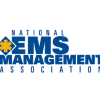Updated June 2015
More out-of-hospital sudden cardiac arrest victims are surviving in Mesa, Ariz., after responders received training in a “pit crew” approach to CPR that included real-time CPR feedback and specific roles for each crew member.
In April 2010, Mesa Fire and Medical Department EMTs and paramedics received two hours of classroom teaching and two hours of scenario-based CPR training. Training emphasized a team approach, along with the importance of minimizing compression interruptions and avoiding excessive ventilation. Zoll Corp. monitor-defibrillators provided real-time audiovisual feedback on compression fraction, depth and rate.
Researchers then compared the rate of survival to hospital discharge for 232 SCA patients treated before the training and 252 after the training and deployment of the Zoll monitors. CPR quality improved markedly: Compression depth increased from 1.78 to 2.15 inches; pre-shock pause decreased from 27 to 16 seconds; and mean ventilation rate fell from nearly 12 to 9.5 per minute. Survival to hospital discharge also improved, rising from 8.7 to 13.9 percent. For patients with shockable rhythms whose arrest was witnessed, survival more than doubled, from 26 to 56 percent.
Researchers led by Bentley Bobrow, M.D., from the University of Arizona noted they could not prove causality with the trial. However, he said, “This is the first study to demonstrate an association between a dedicated CPR quality initiative using real-time audiovisual feedback and out-of-hospital cardiac arrest outcomes.”
The study was published online Feb. 27 in Annals of Emergency Medicine. View a video of the CPR protocol at tinyurl.com/d54p2vb.
Seeing CPR by EMS may temper loved ones’ distress
Contrary to what some may believe, family members who watch a loved one receive CPR, even when unsuccessful, are less likely to experience symptoms of anxiety or post-traumatic stress disorder (PTSD) afterward than those who were not present, a randomized trial finds.
Researchers from France conducted a prospective study in which EMS units were assigned to directly ask family members if they wanted to observe the resuscitation attempt. Others did not specifically ask. About 79 percent of family members who were asked if they wanted to stay did, compared with 43 percent who weren’t specifically asked.
Only 4 percent of the 570 patients survived. Three months later, researchers contacted 266 family members who witnessed CPR and 304 who didn’t and asked them about PTSD and symptoms of anxiety using the Impact of Event Scale and the Hospital Anxiety and Depression Scale. At the three-month mark, 17 percent of family members declined to participate further because of emotional distress. This included five in the intervention group and 20 controls.
In an analysis that excluded the family members of patients who survived, those who witnessed CPR were less likely to experience symptoms of PTSD (27 percent vs. 37 percent) and anxiety (15 percent vs. 23 percent) compared to those who left. There was no statistically significant difference between the intervention and control groups in depressive symptoms, although there was a trend suggesting it (15 percent vs. 26 percent). Less than 1 percent of family members became disruptive while witnessing the resuscitation. Twelve percent of those who were not present said they wished they had been, while only 3 percent of those who were present regretted it. No family members pursued litigation during a mean follow-up of two years.
Some have worried that having family members witness CPR is emotionally harmful to the family and EMS. However, “when offered the choice to witness resuscitative efforts, most relatives opted to do so, and having that choice improved mental health outcomes, with no evidence of harm to any stakeholders,” wrote Daniel B. Kramer, M.D., and Susan L. Mitchell, M.D., of Harvard University in an accompanying editorial.
The study, led by researchers from Hôpital Avicenne in Bobigny, France, is in the March 14 issue of the New England Journal of Medicine.
Crowdsourcing tournament identifies AEDs
Crowdsourcing is an effective method of getting the public’s help in locating public access defibrillators in a large urban city, a study published online March 12 in Circulation finds.
Crowdsourcing, a phenomenon that has grown along with online communities and social media, involves seeking help or ideas from a large group of people in tackling a particular task or issue. On Jan. 31, 2012, researchers from the University of Pennsylvania Perelman School of Medicine and colleagues used an eight-week crowdsourcing tournament called MyHeartMap Challenge, which asked participants to hunt for, photograph and submit location information about AEDs in the city for the chance to win $10,000. Local media helped publicize the tournament, while organizers used social media to encourage participant “dialog and engagement,” according to the study.
More than 300 individuals and teams registered. About 31 percent were students, 21 percent worked in a medical field, and most, but not all, were Philadelphia residents.
Participants submitted AED information via the tournament website or a free mobile phone app. Researchers validated the AED location information by comparing GPS coordinates associated with the photos of the AEDs taken on smart phones with address and building GPS coordinates. Participants were warned that if 0.5 percent of their submissions were found to be inaccurate, they would not be eligible to win.
Participants identified 852 unique AEDs; about 44 percent were previously unknown to researchers or AED manufacturers. About 19 percent were in gyms, 16 percent in schools and 11 percent in office buildings. The tournament “brought together the public with researchers to address an important community health challenge that would have been difficult and expensive to address without this collaborative approach,” the researchers conclude.
While participants had the chance to win prize money, many said their primary motivation was to contribute to an important cause. Read more about the MyHeartMap Challenge at www.med.upenn.edu/myheartmap.












